The interaction between microorganisms; soil structure and vegetal nutrition
Keywords:
Biostructure, bacterial jelly, poliuronic sour, phosphate solubiliAbstract
The vegetable production depends on the floor, climate, nutrition and handling, among other factors that determine the quality and quantity of the crop. Plants take the elements through their roots individually or by means of symbiosis with microorganism, establishing a relationship through which the other inhabitants of the rhizosphere are affected or benefited. Enzymes, flavonoids, organic acids, amino acids, proteins, antibiotics and vitamins that roots and microbes segregate, untie collateral proceedings like organ-minerals particles aggregation, changing the physical condition of the floor at least temporarily. Moreover, in this substance can be caught cations within root's reach. Due to these molecules' deprotonation it also increases up to CIC because it end up free a negative load that can be replaced by a bivalent cation. Exist 17 elements essential the vegetable, without which it cannot complete the life cycle, form organic molecules and constituents and therefore deficiencies appear. This situation also occurs in the rhizosphere organisms affecting the populations; besides, nitrogen and phosphorus require microorganisms to be available for plants. The organic amendments or organic-minerals applied to the floor have three characteristics: they are a mineral source with elements available for the plant, they have a heterogeneous microbial population and a complex of organic molecules, as a result of the decomposition and fermentation. Although they are poor in nitrogen and phosphorus, they are also a source of nitrogen fixers and phosphorus solubilizer microorganisms' UFC, and of others that can also become agents of illnesses if one of the populations surpasses the others.
Author Biography
Francisco García, Fundación Universitaria Juan de Castellanos
References
ATLAS, R.; BARTHA, R. (2001). Ecología microbiana y microbiología ambiental. Madrid España. Editorial Grafilles
BONH, H.; MAGNEAL, B. and O'CONNOR G. (1993). Química del Suelo. Méjico: Limusa.
BORNEMISZA, E. (1982). Introducción a la química de suelos. Washington DC. Editora Eva V. Chesneau.
BURBANO, H. (1989). El suelo una visión sobre sus componentes bioorgánicos. Pasto Colombia. Universidad de Nariño.
CASTRO, H. (1998). Fundamentos para el conocimiento y manejo de suelos agrícolas. Tunja Editorial FUJC.
CRUZ, B y VEGA R. (2005). Incidencia de los sulfatos en las poblaciones de microorganismos fijadores de nitrógeno y solubilizadores de fosfatos en los aof. Tunja: JDC.
ESPINOSA, J. (2004). Potasio en suelos tropicales. Memorias Congreso Colombiano de la Ciencia del Suelo. Medellín.
FASSBENDER, H. (1982). Química de Suelos, con énfasis en suelos de América Latina. San José de Costa Rica: IICA.
GÓMEZ, L. (2005). Efecto de la materia orgánica sobre el comportamiento de las propiedades físicas de un Mollisol en el municipio de Tuta Boyacá. Tunja: JDC.
GÓMEZ, J. (2000). La materia orgánica en el agroecosistema. Palmira, Valle, UNC.
INSTITUTO GEOGRÁFICO AGUSTÍN CODAZZI. (1999). Propiedades físicas de los suelos. Editor subdirección agrícola. Bogotá.
MATHEWS, C. VAN HOLDE K.E. (1998). Bioquímica. Mc Graw Hill. Madrid España.
OSORIO, W. (2005). Función de las enmiendas orgánicas en el manejo de la fertilidad del suelo. Encuentro Nacional de la ciencia del suelo “Materiales orgánicos y microorganismos en la agricultura colombiana” SCCS Medellín.
PATIÑO, A. AMEZQUITA E. (1998) Selección de microorganismos con potencias de agregación (bioestructura) en algunos suelos de Colombia. Encuentro Nacional de labranza de conservación. Villavicencio Meta.
PELZCAR, M,; DREID R, CHANG E.C.S. (1988). Microbiología Mc Graw-Hill. México D.F
PINZÓN, M. (2005). Evaluación de la disponibilidad nutricional de minerales agregados al biol, en procesos aeróbicos y anaeróbicos para el enriquecimiento de bocashi elaborado en Soracá Boyacá. Tunja: JDC.
PRIMAVESSI, A. (1980). Manejo ecológico del suelo. Buenos aires: Editorial El Ateneo.
RACCA, R.; GONZÁLEZ, N. (2006). Bases fisiológicas para el manejo de la FBN en especies forrajeras: Alfalfa. Curso internacional: Producción de Biofertilizantes
desde el laboratorio hasta la aplicación en campo. IBUN. Bogotá.
SALISBURY, F. y ROSS, C. (1992). fisiología vegetal. México DF. Grupo Editorial
Iberoamérica.
SÁNCHEZ, De Praguer M. (1999). Endomicorrizas en agrosistemas colombianos. Palmira, Valle. Universidad Nacional de Colombia.
SANJUÁN J., SOTO J. M., OLIVA-GARCIA J.J., OLIVARES J. (2006). Simbiosis mutualista risorium- leguminosa Vs Patogénesis. Curso internacional: Producción de Biofertilizantes desde el laboratorio hasta la aplicación en campo. IBUN. Bogotá.
ZAPATA, R. (2005). Función de la materia orgánica sobre la movilidad iónica. Encuentro Nacional de la ciencia del suelo “Materiales orgánicos y microorganismos en la agricultura colombiana” SCCS Medellín.




